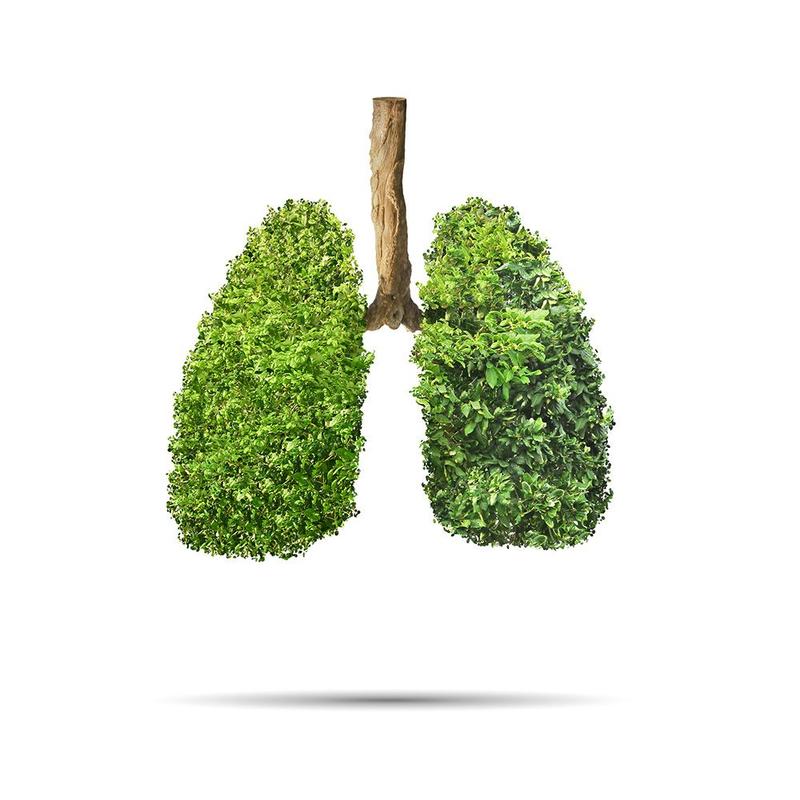From CFC to HFC to dry-powder
Following the mandatory replacement of CFC gas with HFC in aerosols, due to the negative impact on the ozone layer, current HFC gases in aerosols were also found to be contributing to global warming. Emissions from these aerosols amount to more than 50 kiloton CO2 equivalent in Belgium, which means that CO2 emissions could be considerably reduced by minimising the use of propellant aerosols where possible.
18 times less CO2
The British Thoracic Society previously confirmed that inhalers without gas produce 18 times fewer CO2 emissions than propellant aerosols. An analysis of the situation in Belgium conducted by Health-Ecore demonstrated that a total replacement of propellant aerosols with dry-powder aerosols in Belgium in itself would have a similar impact on emissions as 18,800 petrol driven cars (covering 20,000 km/annum) being taken off the road or 3,000 return flights from Brussels to London being cancelled every year.
Environmentally friendly and effective
Prof. dr. Guy Joos, Head of Department lung disease at UZ Gent confirmed: ‘Lung patients are often victim to air pollution and climate change. We are pleased, therefore, that we in the care sector can contribute to sustainable development targets. Lung specialists as well as GPs, pharmacists and lung patients should be aware not only that dry-powder inhalers are more environmentally friendly, but also that scientific studies have shown that they often produce better treatment results for patients. They are more user friendly, which means that patients make fewer mistakes and are more inclined to stick to their therapy.’
There is clearly room for prescribing the more environmental-friendly dry-powder inhalers to more patients, but not all lung patients will be able to switch to dry-powder inhalers.Prof. dr. Geert Verleden - department head respiratory diseases UZ Leuven
Task for physicians and pharmacists
Prof. dr. Geert Verleden, Head of Department lung disease at UZ Leuven added: ‘Data from 2017 have shown that of the total number of prescriptions for maintenance treatment with inhalation medication 47% of cases involved propellant aerosols. There is clearly room for improvement, with the added bonus of an extremely beneficial impact on the environment. Not all lung patients will be able to switch to dry-powder inhalers as this is dependent upon the patient’s preference and the possibility of using an inhaler effectively. It is important that the doctors and pharmacists who manage the treatment should properly investigate and monitor this, which will ultimately also benefit therapy-loyalty and disease management.’
Action plan
Prof. dr. Renaud Louis, Head of Department lung disease at CHU Liège concluded as follows: ‘We will now develop a concrete action plan for asthma and COPD patients. Together with lung specialists, GPs and family pharmacists, we will develop a plan focusing on the appropriate use of inhalers and a realistic CO2 emission reduction plan.’
Maggie De Block, the outgoing Minister of Health, emphasised: ‘The analysis of the situation in Belgium has shown that there is potential, with the correct choice and appropriate use of inhalation medication by lung patients, to achieve better results and to contribute to CO2 emission reduction targets. This means that the care sector is also making a contribution in terms of climate change.’
